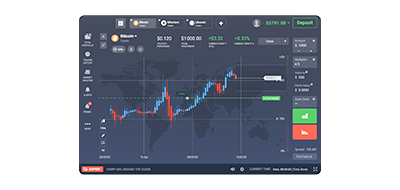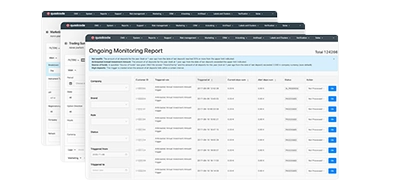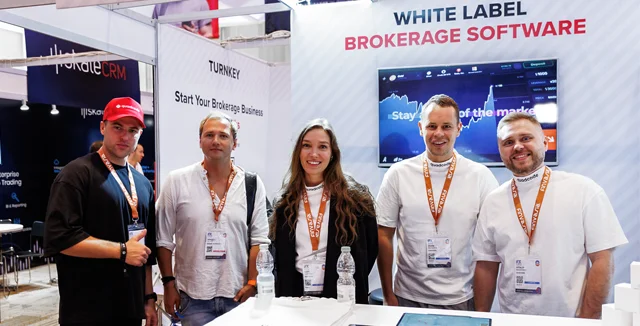Back

Technology
A-Book vs B-Book vs Hybrid Brokerage Models Comparison

Written by:
Demetris Makrides
read
Published:
January 17, 2024Updated:
May 3, 2024views
Table of contents
In the world of Forex trading and financial markets, navigating through different brokerage models is crucial. A-Book, B-Book, and Hybrid Brokerage models stand out as the predominant models, each with distinct mechanisms and implications for brokers and traders alike. The chosen model not only affects the trading experience but also impacts the profitability and risk levels associated with trading activities. Brokers play a pivotal role in this ecosystem, acting as intermediaries and providing traders with access to financial markets. Consequently, understanding these models and choosing the right one is essential.
Understanding Brokerage Models
To navigate the intricate landscape of financial trading effectively, a fundamental understanding of the various brokerage models is paramount. Brokerage models serve as the backbone of trading operations, defining the relationship between traders and brokers and shaping the overall trading experience. They are the architectural frameworks that delineate how brokers handle traders’ orders and manage risks, and they significantly impact the transparency, fairness, and integrity of trading practices. In this context, we delve into the three predominant brokerage models – A-Book, B-Book, and Hybrid – each with its unique operational mechanisms, advantages, and disadvantages.
A-Book Brokerage Model
In the A-Book model, brokers simply pass traders’ orders straight to larger financial institutions like banks, without taking any contrary position. This model, also known as Straight Through Processing (STP) or agency model, means brokers act like middlemen connecting traders to the financial market. They earn their revenues through commissions and spreads, maintaining a transparent and impartial stance, as their profits are not influenced by traders’ wins or losses.
B-Book Brokerage Model
Conversely, in the B-Book model, brokers act as the opposite trader, meaning if the trader buys, the broker sells, making their own market. This model creates a scenario where brokers stand to profit when traders incur losses, inherently birthing a potential conflict of interest. While it enables brokers to manage risk internally, it can also pave the way for practices detrimental to traders, such as stop-loss hunting and price manipulation, owing to the inherent conflict in brokers profiting from traders’ losses.
Hybrid Brokerage Model
The Hybrid model mixes the methods of both A-Book and B-Book models, letting brokers choose whether to pass orders to larger financial institutions or keep them in-house. The choice between the models is contingent upon a myriad of factors including the traders’ profile, prevailing market conditions, and the broker’s risk management strategies. This model strives to marry the transparency and impartiality of the A-Book model with the risk management prowess of the B-Book model, providing a balanced and versatile solution in the diverse trading ecosystem.
Evolution of Brokerage Models
The development of different brokerage models is a result of the evolving needs of traders and the ongoing quest for optimizing risk and profitability for brokers. Initially, brokers predominantly used B-Book models, leveraging their position to manage risk and secure profits internally. However, this approach often led to unfavorable conditions for traders, prompting a shift towards more transparent and fair trading environments.
The A-Book model emerged as a response, fostering transparency by directly connecting traders to the market and minimizing conflicts of interest. This approach, although beneficial to traders, presented challenges to brokers in terms of revenue generation, leading to the inception of the Hybrid model. The Hybrid model offered a balanced solution, allowing brokers to optimize risk management and revenue while maintaining fairness and transparency.
Each model has its unique set of advantages, disadvantages, and operational mechanisms, shaped by the evolving dynamics of the trading world. As we delve deeper into each model in the subsequent sections, traders and brokers alike will gain insights into selecting the model that aligns best with their trading strategies, ethical considerations, and financial goals.
A-Book Brokerage Model
The A-Book model operates as a conduit between traders and the global financial markets.
Within this model, brokers transfer traders’ orders directly to liquidity providers, which comprise banks, large institutional brokers, and other financial entities. Instead of taking opposing positions to their clients’ trades, brokers under this paradigm act primarily as intermediaries.
In the A-Book model, larger financial institutions are crucial as they offer varied market options and make sure that orders are completed efficiently. They facilitate real-time market prices and trade execution, thereby fostering transparency and credibility in the trading ecosystem.
Pros of A-Book Brokerage Model
In the A-Book brokerage model, one of the foremost advantages is the establishment of a transparent and equitable trading environment. Since brokers forward trades directly to liquidity providers or interbank markets without opposing the traders’ positions, this system diminishes conflicts of interest and is seen as a more “fair” model. Traders are given access to real market data and can see genuine buy and sell prices, which is critical for those who rely heavily on market analysis for their trading strategies. This transparency cultivates a relationship of trust between the broker and the trader, crucial for long-term sustainability in the trading world.
Another significant advantage of the A-Book model is its ability to shield brokers from substantial market risks. In contrast to the B-Book model where brokers stand to profit or lose from traders’ positions, the A-Book model neutralizes this risk by passing orders directly to liquidity providers. This means brokers’ revenues are not impacted by market fluctuations or traders’ gains or losses. Such a risk-averse approach is particularly valuable in highly volatile market conditions, safeguarding broker’s financial health.
Moreover, the A-Book model facilitates rapid and diverse market access and offers superior execution speeds, minimizing slippage. This speed and efficiency are particularly crucial for traders employing strategies like scalping, where profits are often derived from exploiting small price changes over a short period.
Cons of A-Book Brokerage Model
However, the A-Book model is not without its challenges. The reliance on commission and spread-based revenue can be a limiting factor for brokers as their earnings are intrinsically tied to trade volumes and not the profits or losses of the trades. During low trading volumes or market stagnation, brokers may experience reduced revenue inflow, impacting their profitability. This constraint on earning potential necessitates the development of a diversified client base and the implementation of effective client retention strategies.
For traders, the commission and spread costs in the A-Book model can be comparatively higher, thus elevating the cost of trading. This model may not be economically feasible for traders with smaller account sizes or those who prefer trading in larger volumes, making it essential for such traders to assess the cost implications meticulously. A detailed evaluation of the cost-benefit balance is vital to ensure that the trading costs do not outweigh the potential profits.
B-Book Brokerage Model
The B-Book model represents a distinct operational strategy where brokers effectively act as the counterparty to their traders’ positions.
In this model, instead of routing orders to external liquidity providers, brokers keep the trades in-house, potentially profiting from the traders’ losses.
To manage the risks associated with this model, brokers employ sophisticated risk management strategies and algorithms. These tools help identify and segregate trading accounts based on their risk profiles, allowing brokers to hedge certain positions externally if they deem the risk to be too high, ensuring the broker’s financial stability and sustainability in volatile market conditions.
Pros of B-Book Brokerage Model
The B-Book Brokerage Model allows brokers to act as market makers, creating a distinct internal market for their clients. This approach provides a substantial opportunity for profit, as brokers can benefit from traders’ losses, offering a consistent revenue stream independent of market conditions or trade volumes. This means that even in periods of low market activity, brokers have the potential to maintain stable revenue generation.
Another advantage is the ability to offer lower transaction costs, appealing particularly to retail traders with smaller account balances. By controlling the internal market, brokers can provide competitive spreads and lower commissions, rendering trading more accessible and economically viable to a broader range of traders. This cost-effectiveness is crucial for traders, seeking to maximize their profits while minimizing expenditure.
The flexibility and control inherent in the B-Book model also empower brokers to manage their risk exposure effectively. They can adjust the spreads and leverage offered to traders based on risk assessment, ensuring a balanced and controlled trading environment. This ability to modulate offerings in real-time is invaluable in maintaining broker stability and mitigating potential losses.
Cons of B-Book Brokerage Model
However, the B-Book model brings with it inherent conflicts of interest, as the broker profits directly from the trader’s losses. This setup can lead to a perceived lack of transparency and trust, potentially straining the broker-trader relationship. Traders may be wary of broker manipulation and may question the fairness and integrity of the trading environment provided.
Furthermore, brokers assume significant market risk, as they take the opposite side of the traders’ positions. In highly volatile markets, brokers face the danger of substantial losses if many traders secure profits. This necessitates robust risk management strategies and constant vigilance to navigate market shifts and maintain financial equilibrium.
Hybrid Brokerage Model
The Hybrid brokerage model ingeniously marries the attributes of both the A-Book and B-Book models, offering brokers a versatile and adaptive operational approach.
In this integrated framework, brokers possess the discretion to either pass a trader’s order directly to external liquidity providers or keep it in-house, thus acting as a counterparty.
The decision on which model to employ within the Hybrid setup typically hinges on a myriad of factors. These encompass the trader’s profile, historical trading success, account size, and the prevailing market conditions. Moreover, sophisticated algorithms and risk assessment tools often aid brokers in this decision-making process, ensuring that they strike an optimal balance between maximizing profitability and mitigating potential risks.
Pros of Hybrid Brokerage Model
The Hybrid Brokerage Model amalgamates the A-Book and B-Book models, aiming to optimize the benefits of both. This combination offers brokers a flexible and adaptive approach, allowing them to balance risk and revenue generation efficiently. Depending on market conditions, trader profiles, and risk assessments, brokers can switch between A-Book and B-Book operations, maximizing profitability while mitigating exposure.
The adaptability of the Hybrid model enables brokers to cater to a diverse clientele with varied trading needs and preferences, providing tailored offerings and enhancing customer satisfaction and retention. By aligning their operations with traders’ expectations and market dynamics, brokers can cultivate a more harmonious and responsive trading environment.
Cons of Hybrid Brokerage Model
The complexity of managing both A-Book and B-Book operations simultaneously poses significant operational challenges. It requires sophisticated technology, advanced risk management strategies, and constant monitoring to ensure seamless integration and execution of both models. The Hybrid model is complex and resource-heavy, requiring careful planning, implementation, and monitoring.
Moreover, the Hybrid model inherits the inherent conflicts of interest from the B-Book model. Balancing transparency, fairness, and profitability becomes a delicate task, requiring careful consideration and clear communication to maintain trader trust and satisfaction. Brokers must navigate these ethical considerations diligently to sustain a reputable and equitable trading platform.
Regulation and Ethical Considerations
In brokerage, comprehensive regulations and ethical standards are pivotal. These are established by global regulatory bodies such as the Financial Conduct Authority (FCA), the Commodity Futures Trading Commission (CFTC), and the Australian Securities and Investments Commission (ASIC), to ensure the security and fairness of trading practices. These institutions formulate and enforce rules that brokers must adhere to, ensuring transparency and fairness, and protecting the interests of traders.
Regulations govern various operational aspects of brokerage like transparency, leverage, margin requirements, and client protection. These are crucial for maintaining a credible and ethically sound trading environment. They are dynamic and adapt to the evolving financial markets, addressing emerging vulnerabilities and challenges in brokerage operations, making it essential for brokers to stay informed and compliant.
Ethical Considerations in Brokerage Models
Brokerage models, each with its distinctive operational features, present unique ethical challenges, particularly related to conflicts of interest and the integrity of broker-trader relationships. For example, in B-Book models, the potential for brokers to profit from traders’ losses necessitates transparent operations and robust ethical conduct to maintain trust.
In Hybrid models, balancing transparency, fairness, and profitability becomes intricate due to the combination of A-Book and B-Book operations. Clear, open communication is crucial in such models to sustain trust and satisfaction among traders.
Addressing these ethical considerations is indispensable. It builds trader trust, fortifies long-term relationships, and contributes to the sustainability and success of brokerage firms. Ethical alignment with operational models enhances the trader-broker relationship and assures the long-term viability and prosperity of brokerage firms in the competitive trading environment.
Final Thoughts
An in-depth comprehension of the diverse brokerage models, their operational mechanics, and associated ethical implications is indispensable for traders and brokers alike. The selection of a brokerage model should align with one’s trading aspirations, risk tolerance, and the ethical framework of the available models, ensuring a harmonious trading experience marked by transparency, trust, and mutual respect.
For traders, understanding the operational and ethical dimensions of brokerage models is crucial as it significantly influences their trading experience and the level of trust they can place in their brokers.
Brokers must align their operational strategies with regulatory and ethical standards, fostering a conducive and equitable trading environment and ensuring the sustainability and legitimacy of their operations.
In conclusion, an alignment between ethical norms, regulatory frameworks, and individual needs creates a balanced and equitable trading ecosystem, benefiting both traders and brokers in the fluctuating financial markets.





